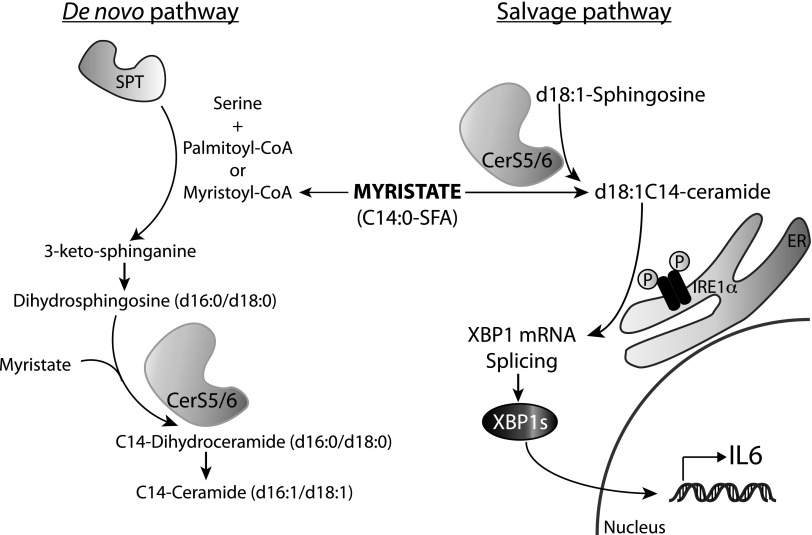Figure 8.
Proposed model for myristate-induced ER stress and inflammatory cytokine expression via CerS5/6. Myristate treatment promotes ceramide generation via 2 distinct pathways, the de novo pathway and the salvage pathway. CerSs, which are involved in both pathways, produce (dihydro)ceramide by catalyzing the N-acylation of (dihydro)sphingosine. CerS-derived ceramide from the salvage pathway, specifically CerS5/6 and its product, C14-ceramide, activates IRE1 and induces XBP1s which results in increased expression of IL-6.

